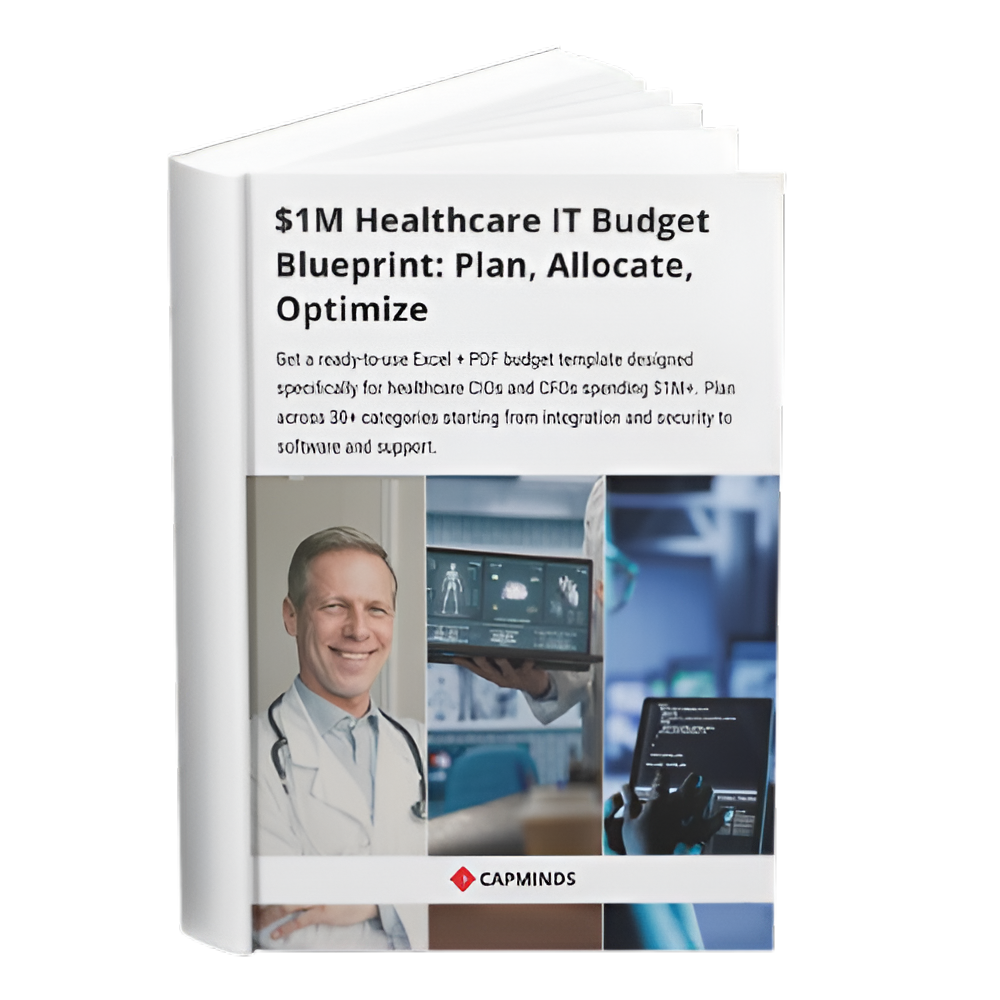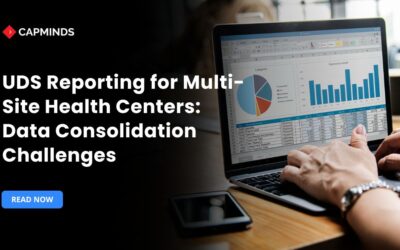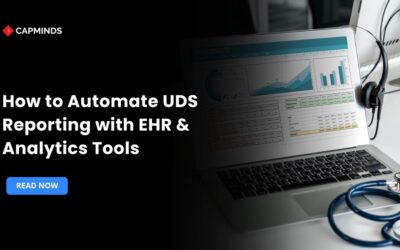What is UDS Reporting in Healthcare? Everything You Need to Know
Uniform Data System (UDS) reporting is required for all health centers receiving federal funding. The Health Resources and Services Administration (HRSA) requires these reports for monitoring results and performance.
Important data such as patient demographics, clinical results, financial information, and service usage are collected through UDS data reporting. This information ensures that available resources are used more effectively and helps providers assess the quality of healthcare.
Obtaining financing is not the only benefit of accurate reporting. Additionally, it enhances public health activities and has an impact on governmental decisions.
This article will cover the essentials of UDS reporting. Its benefits, the submission procedure, common issues, and ways for improving data accuracy will all be discussed. Improved compliance, stronger results, and more efficient operations are the obvious goals.
What is UDS Reporting?
The Health Resources and Services Administration mandates federally funded health facilities to use the Uniform Data System, a standardized reporting system. It serves as an all-encompassing instrument to:
- Collect consistent data on patient demographics
- Services provided
- Clinical outcomes
- Financial metrics.
HRSA can keep an eye on health center performance, guarantee adherence to federal regulations, and influence policy decisions that enhance healthcare delivery for a range of populations thanks to this careful data collecting.
Related: UDS and UDS+: The Ultimate Guide to Healthcare Compliance and Data Reporting
Who Needs to Submit UDS Reports?
Submission of UDS reports is mandatory for:
- Community-based organizations are Federally Qualified Health Centres. They offer complete primary care as well as preventive therapies to poor areas.
- Look-Alikes for the Health Center Program meet all HRSA requirements. They do not, however, get federal funds.
- Tribal and Urban Indian Health Centres serve Native American and Alaska Native populations.
- The main goal of these clinics is to make culturally competent healthcare more accessible.
In order to stay in compliance, obtain financing, and participate in the analysis of national healthcare data, these organizations must submit reports on an annual basis.
Key Components of UDS Reporting
UDS reporting includes some essential elements that work together to give a thorough picture of a health center’s operations and patient care results:
1. Patient Demographics
This section captures detailed information about the patient population served, including:
- Patients are divided into groups based on their gender at birth and age.
- Determining patients’ racial and ethnic backgrounds to track and address health disparities.
- The patients’ income is compared to federal poverty guidelines in order to determine the socioeconomic level of the group served.
- Records for the patient’s uninsured health insurance, Medicaid, Medicare, and private insurance.
Compiling this data makes it easier to identify places that require targeted interventions and tailor services to the community’s specific needs.
2. Clinical Measures
Clinical measures for evaluating the quality of care provided include:
- Pap smear, mammography, and colorectal cancer screening rates.
- Monitoring of diseases, including diabetes and hypertension, as well as control rates and treatment methods.
- Keeping track of immunization records for both children and adults to ensure compliance with approved schedules.
These criteria are consistent with national quality standards and aid in the assessment of treatment options.
3. Service Utilization
This component details the volume and types of services provided, such as:
- Number of patient visits for primary care services.
- Providing preventive and restorative dental care.
- Mental health and substance use disorders can be treated.
- Case management, transportation, and interpretation are examples of support services that help people get the care they need.
Finding service delivery gaps and planning resources are aided by analyzing service consumption trends.
4. Financial Data
Financial reporting includes:
- Revenue from grants, patient services, and other sources of funding, broken down.
- Thorough accounting of all operating expenses, including those for staff, infrastructure, and supplies.
- Information on fees, including sliding price discounts, that are obtained directly from patients.
This financial data is essential for determining the health center’s financial stability and sustainability.
5. Health Outcomes & Quality Measures
The effectiveness of care and patient health outcomes are the main topics of this section, which includes:
- Metrics like blood pressure control and diabetes management that evaluate the standard of patient treatment.
- Feedback systems and surveys to measure patient happiness and experiences.
Initiatives for ongoing quality improvement benefit from tracking these results.
6. Operational Efficiency & Staffing
This section looks at the health center’s operational elements, such as:
- Details about the quantity and kinds of employees, including support workers and medical professionals.
- Evaluation of the productivity of providers, including the quantity of patient visits for each professional.
- Evaluation of the efficiency with which services are provided using the health center’s facilities.
Optimizing resource consumption and enhancing service delivery are made possible by evaluating operational efficiency.
Benefits of UDS Reporting in Healthcare
UDS reporting has several benefits that improve organizational performance and healthcare delivery:
1. Improved Patient Care & Outcomes
Through systematic collection and analysis of patient data, health centers may monitor illness prevalence, identify trends, and evaluate the effectiveness of therapies. The application of targeted interventions made possible by this data-driven approach ultimately results in improved patient outcomes.
2. Better Resource Allocation
When health facilities have thorough knowledge of patient demographics and service usage, they may manage resources more effectively. Understanding which populations are underserved and which services are in high demand helps with strategic planning and resource allocation.
3. Compliance & Funding Eligibility
Annual UDS reports must be submitted by health centers that receive federal support. This stipulation guarantees their continuous eligibility for HRSA funding.
Reliable reporting demonstrates that businesses adhere to government regulations. Additionally, it permits them to continue operating as Health Center Program Look-Alikes or Federally Qualified Health Centers.
There are significant dangers associated with missing deadlines or submitting erroneous data. Funding reductions, fines, or even loss of program eligibility are all possible outcomes for centers.
Moreover, UDS compliance creates additional opportunities. Grants and other financial incentives linked to quality improvement are available to health centers. Funds are allocated by numerous federal and state programs according to performance indicators submitted via the UDS system.
4. Data-Driven Decision Making
UDS reporting gives healthcare businesses actionable insights. When leaders have access to trustworthy data, they can make the best decisions on resource allocation and patient care.
By looking at trends in demographics, service utilization, and health outcomes, health facilities can:
- Determine any gaps in service delivery.
- Develop targeted interventions for high-risk populations.
- Simplify clinical and administrative procedures to boost output.
Consider diabetes. A clinic can allocate more funds to management programs if it observes a high proportion of patients with diabetes. Screenings, patient education, and programs for specialized care may fall under this category.
5. Enhanced Performance Monitoring
Healthcare practitioners can evaluate their performance over time and compare it to national norms by using UDS data as benchmarks.
The following are some of the primary performance indicators used in UDS reporting:
- Rates of success in treating chronic illnesses (e.g., blood pressure control, diabetes treatment).
- Preventive treatment measures (e.g., cancer screenings, vaccinations).
- Patient engagement metrics, like appointment adherence and follow-ups.
By continuously tracking and improving these KPIs, healthcare institutions may maintain a competitive edge and improve the quality of their services.
6. Public Health Insights & Trends
Public health depends heavily on data gathered through UDS data reporting. This data is used by agencies, scholars, and legislators to inform choices and develop strategies.
They benefit from UDS data:
- Identify at-risk groups and pay attention to health inequalities.
- Keep tabs on developments in chronic diseases and epidemics.
- Create community health initiatives based on insights from evidence.
Take, for instance, mental health. Policymakers can take action if UDS data indicate an increase in instances in a particular area. They might increase financing for mental health initiatives or make telehealth services more widely available.
7. Supports Government & Healthcare Policies
HRSA and other federal health agencies use UDS data to guide healthcare financing and policy decisions. The findings of these studies often influence Medicaid expansion, public health programs, and government funding allocation.
State and federal legislators also use the data to guide efforts to improve the accessibility and affordability of healthcare.
Active involvement in UDS reporting benefits health institutions in ways beyond merely guaranteeing compliance. It increases their eligibility for future financial and policy possibilities and establishes them as reliable partners in public health initiatives.
Related: Simplifying UDS Reporting: The Power of FHIR-Based EMR Integration
UDS Data Collection & Submission Process
How is Data Collected?
UDS data is collected through:
- Patient data can be automatically extracted thanks to electronic health records.
- Direct information on demographics and health status can be obtained through patient surveys.
- For some measures, manual data entry is still necessary to ensure correctness.
Healthcare providers are required to maintain standardized and consistent data collection procedures. To guarantee complete compliance, they must also adhere to HRSA regulations.
USD Report Submission Timeline & Deadlines
- Every year, UDS reports are turned in. They include information from January 1 to December 31.
- The following year’s February 15th is the last day to submit.
- In early March, HRSA also offers a brief corrective period. Health facilities can correct any reporting inaccuracies during this window.
Compliance issues may arise from missing deadlines or providing erroneous data. Funding delays could potentially result from it.
How to Submit UDS Reports?
UDS reports must be submitted via the HRSA’s Electronic Handbook portal. The steps include:
- First, data must be gathered and validated. Each necessary field needs to be precise and full.
- Internal approval and evaluation come next. Before filing reports, health centers must conduct audits.
- The HRSA Electronic Handbooks (EHB) are then used to upload the report. Teams are required to confirm that all information is accurate.
- Confirmation is the last phase. After submitting the report, centers keep an eye out for any revision requests or comments from HRSA.
HRSA offers technical support, comprehensive guidelines, and training programs to help with this procedure. Health facilities can prevent errors and streamline reporting with the use of these services.
UDS Quality Measures & Compliance
In order to maintain compliance and meet quality standards, healthcare practitioners need to remain focused. Among the top priorities are:
- Confirming the accuracy and completeness of the data.
- Coordinating reporting procedures with HRSA regulations.
- Combining data from several sources, including patient questionnaires, financial records, and electronic health records.
- Delivering frequent training on UDS reporting procedures to employees.
Health facilities maintain their financial eligibility by fulfilling these requirements. Additionally, they improve performance evaluations and lay the groundwork for sustained success.
How Does UDS Reporting Affect Healthcare Funding?
Health center federal funding is directly impacted by UDS data.
- Higher funding incentives are frequently given to centers that provide excellent care and exhibit high levels of patient participation.
- Moreover, grant applications are strengthened and access to performance-based funding is enhanced by transparent reporting.
- To determine which locations are most in need, government organizations use UDS data. Resources are subsequently allocated to those communities.
More funding opportunities are created by high UDS performance. It makes it possible for health centers to reach more patients and offer more services.
Challenges in UDS Reporting & How to Overcome Them
1. Data Accuracy & Completeness Issues
- Problem: Inconsistent data entry, missing patient records, and reporting errors all reduce accuracy.
- Solution: To reduce errors, employ automated validation tools in EHR systems. To increase accuracy, conduct frequent data audits and provide ongoing training to personnel.
2. Integration with EHR Systems
- Problem: UDS reporting is not supported by many EHR platforms. Employees are frequently forced to collect data manually as a result.
- Solution: To enable automatic UDS data extraction, collaborate with EHR providers. Workflows for reporting can also be streamlined with the use of data integration solutions.
Related: Electronic Integration Between EMRs and the UDS Reporting System Using FHIR
3. Staff Training & Workload
- Problem: UDS reporting is time-consuming and detailed, which creates a hurdle. It demands a deep understanding of compliance rules.
- Solution: Provide personnel with ongoing HRSA training. Assign a specialist UDS compliance team to properly manage reporting requirements.
4. Keeping Up with Regulatory Changes
- Problem: It can be difficult to comply with HRSA’s regular revisions to UDS reporting standards.
- Solution: Create an internal compliance review system, go to yearly UDS training sessions, and sign up for HRSA updates.
FAQs About UDS Reporting
1. What happens if a health center fails to submit a UDS report?
There may be severe repercussions if a health center files an inaccurate or incomplete UDS report, or if it does not submit one at all.
- Centers that receive federal aid or HRSA grants run the danger of losing their eligibility for financing.
- Penalties, audits, or additional reporting requirements could result from noncompliance.
- Inaccurate or missing data may restrict eligibility for other federal and state health programs that depend on openness.
- Missing reports impair public health insights and could result in less financing for underprivileged places because UDS data influences national performance criteria.
Health centers should schedule submissions in advance to avoid these hazards. The accuracy of each data point should be confirmed. To overcome obstacles during reporting, teams can also make use of HRSA’s technical assistance tools.
It is crucial to get in touch with HRSA right away if there are any delays. Mitigating compliance difficulties and safeguarding money can be achieved by utilizing the rectification period or requesting an extension.
2. How often is UDS data reported?
UDS data spans the entire calendar year, from January 1 to December 31, and is released once a year. Reports from health facilities must be turned in by February 15 of the subsequent year.
Even if submission takes place once a year, preparation must be continuous. Health facilities ought to:
- Conduct internal evaluations of their UDS data on a quarterly or monthly basis.
- To prevent last-minute mistakes, monitor important performance indicators all year long.
- To enable seamless reporting, train employees, and maintain EHR systems.
Compliance risks are decreased by proactive preparation and monitoring. They speed up and improve the accuracy of the final submission procedure.
3. Can private hospitals participate in UDS reporting?
Unless they are funded by HRSA or are part of a federal health program, private hospitals are exempt from UDS reporting requirements.
Nonetheless, a lot of non-FQHC institutions and commercial hospitals decide to gather comparable performance data. They utilize it to support grant applications, conduct research, and conduct internal benchmarking. A private hospital can comply with UDS reporting requirements by:
- Utilize UDS data parameters to track patient outcomes and performance.
- Examine its health trends and patient demographics in comparison to those of health centers that receive federal funding.
- Participate in local or state health programs that mandate uniform reporting for medical services.
Modern tools are available to hospitals interested in using UDS approaches. HRSA training modules, data gathering platforms, and EHR connections are among the available options. These tools assist in bringing reporting procedures into compliance with nationally accepted standards.
4. What tools help in collecting UDS data?
Reporting from UDS requires gathering a lot of data. Clinical, operational, financial, and demographic data must be monitored by health centers. Many people rely on specialized tools to manage this workload.
- Electronic Health Record Systems: EHR platforms are used by the majority of health facilities to automate the collection of patient data. Important indicators needed for UDS reporting are likewise monitored by these systems.
- UDS Mapper: The UDS Mapper utility is offered by HRSA. It enables geographic data visualization and analysis for health centers. They can use it to find service gaps, patient groups, and health inequities.
- Data analytics software: Centers frequently make use of bespoke dashboards or analytics platforms like Tableau and Power BI. Throughout the year, these technologies support the monitoring and validation of UDS metrics.
- The Electronic Handbook of HRSA: The official UDS submission platform is the EHB portal. To guarantee correct reporting, it provides validation checks, submission criteria, and assistance services.
5. How can healthcare providers improve UDS scores?
Planning, patient involvement, and continuous quality improvement are necessary to raise UDS scores. Health facilities that concentrate on these areas perform better.
Promote Patient Involvement: Encourage patients to make appointments for screenings, vaccinations, and checkups for chronic illnesses in order to promote preventive care. Performance metrics are directly improved by these actions.
Make Use of Digital Resources to Engage: Reduce the number of no-shows by setting up automated appointment reminders. Provide telehealth choices to make follow-ups simpler. Give patients individualized health education so they can take control of their treatment.
Boost the Accuracy of Data: Teach employees how to enter data and document properly. To find contradictory or missing data, conduct routine EHR audits. Make sure all reports submitted to HRSA are complete and on time.
Implement Programs for Quality Improvement: Use clinical procedures that are supported by research to enhance results. To find service deficiencies, use patient satisfaction surveys. Use analytics tools to monitor performance patterns and direct upcoming enhancements.
Related: HL7 FHIR Bulk Data Access: Setting a New Standard for UDS Reporting
Conclusion: Why UDS Reporting Matters
UDS reporting goes beyond simple compliance. Additionally, it is an effective tool for enhancing the quality of care, maximizing funds, and producing better patient results.
Adopting data-driven tactics gives health facilities a distinct advantage. They can increase reporting accuracy with properly trained personnel and the appropriate technologies. This ensures long-term funding to enable sustainable growth in addition to protecting compliance.
Optimize Your UDS Reporting with CapMinds
CapMinds specializes in FHIR-based EMR integration solutions that make UDS reporting easier. Our healthcare IT staff has extensive knowledge of how to integrate EMRs with the UDS system. We simplify the process of extracting, transforming, and submitting data.
You can benefit from genuine automation when you work with us. FHIR-based integration guarantees more accurate reporting while minimizing administrative effort.
Our team also provides UDS reporting support for health centers that need guidance to stay compliant with HRSA requirements. This ensures that your data is complete, accurate, and submitted on time.
For a free consultation, get in touch with us right now. Allow us to demonstrate how our solutions can help your health center stay ahead of the curve, maintain compliance, and streamline your reporting operations.




